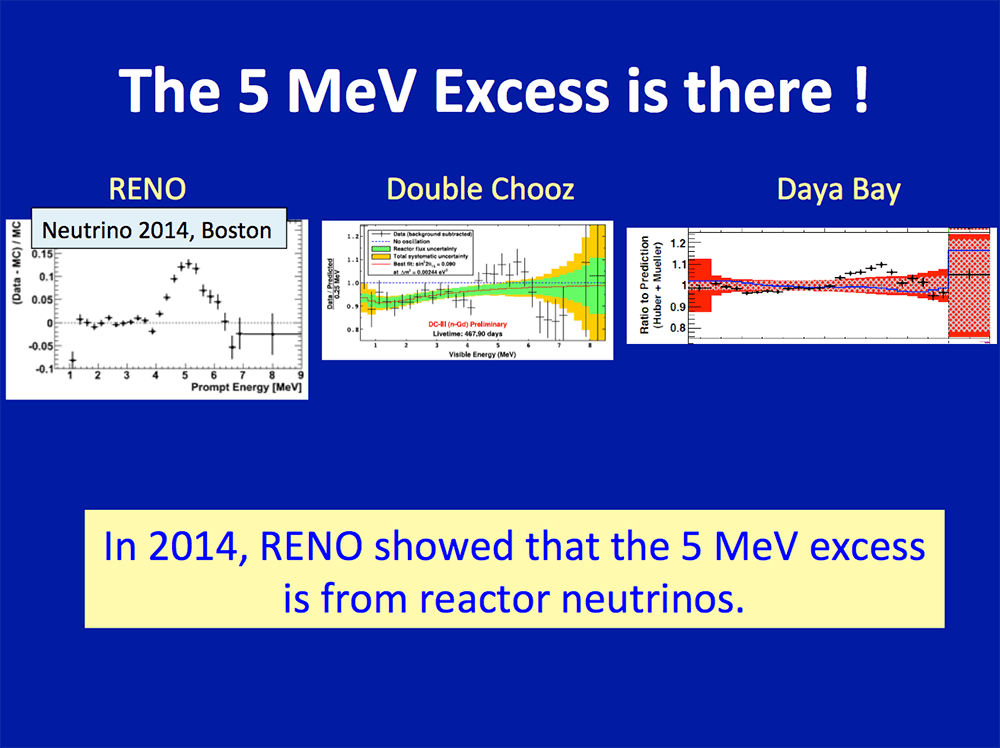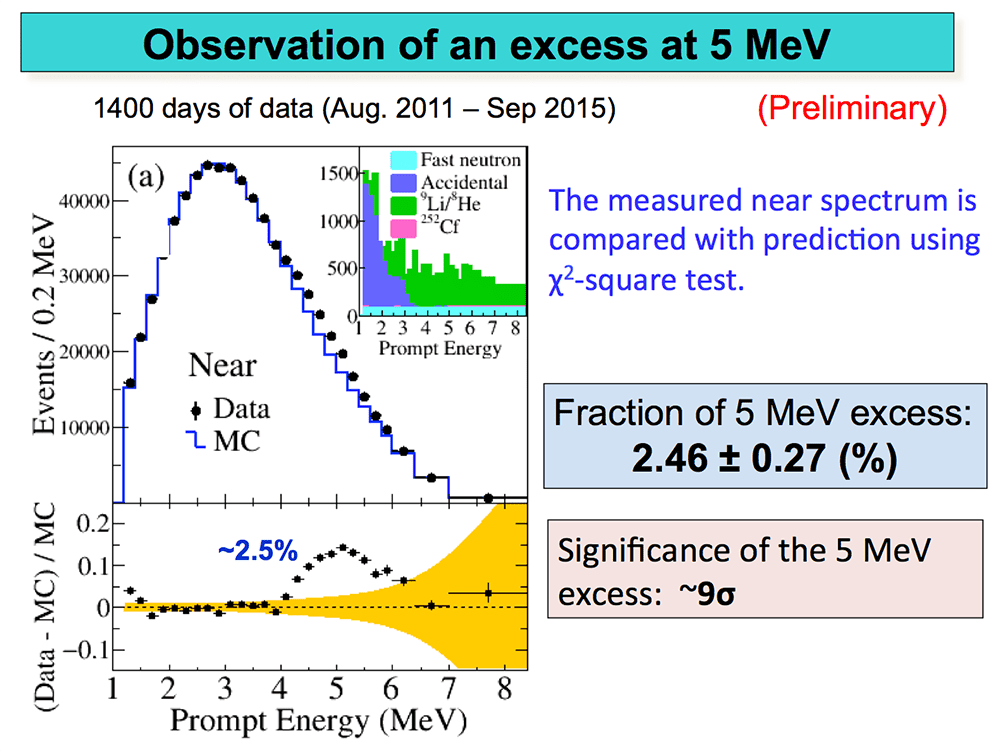
By Tushna Commissariat
A final mystery that was mentioned at the Neutrino 2016 I attended in London this week was yet another unexpected “bump” in data at 5 MeV, measured while monitoring the neutrino flux from nuclear power plants. Starting with the RENO experiment in 2012, it was spotted by the Double Chooz experiment in 2014 and finally by the Daya Bay neutrino experiment earlier this year. While the initial signal was not of high enough statistical significance, it has now held up over time and more measurements.
Kyung Kwang Joo from the Chonnam National University in South Korea, who presented the latest results from RENO, revealed that the significance of the excess is now at a whopping 9σ for RENO data. Joo also said that RENO found that the excess was clearly linked to reactor thermal power as it was immediately visible when all six reactors at the plant were running, but dropped off when two or three reactors were switched off.

After all of this neutrino talk, in case you would like to remind yourself about the exciting story that led to the discovery of these particles, take a look at the Institute of Physics blog, where editor Christopher White has written a five-part series on the history of neutrinos.
Suffice to say that although we know a fair bit about neutrinos today, there seems to be as much, if not more, that we still do not fully understand. These “little neutral ones” (as they were christened by Enrico Fermi) still hold some big secrets and I’m looking forward to the big reveal.



